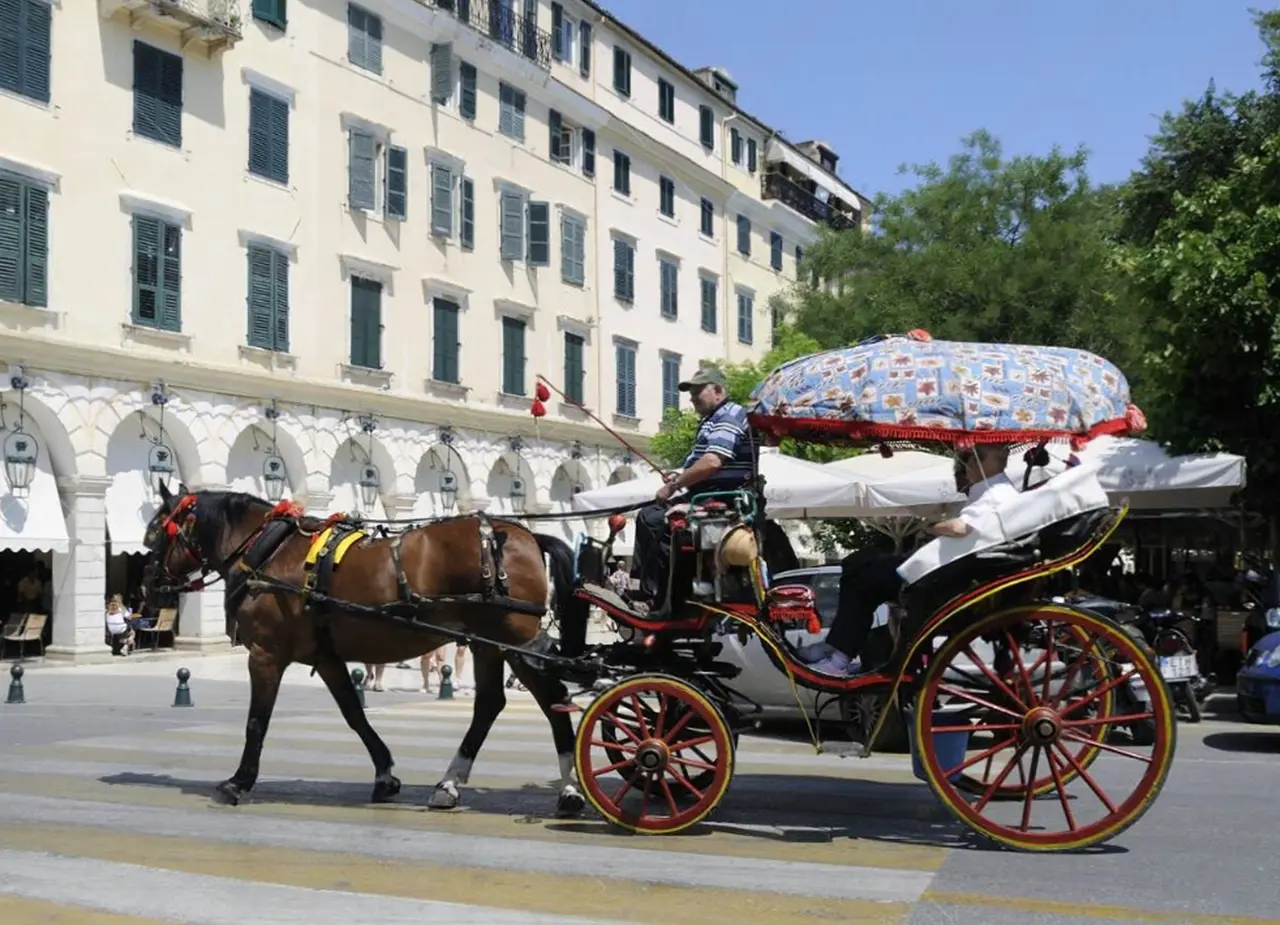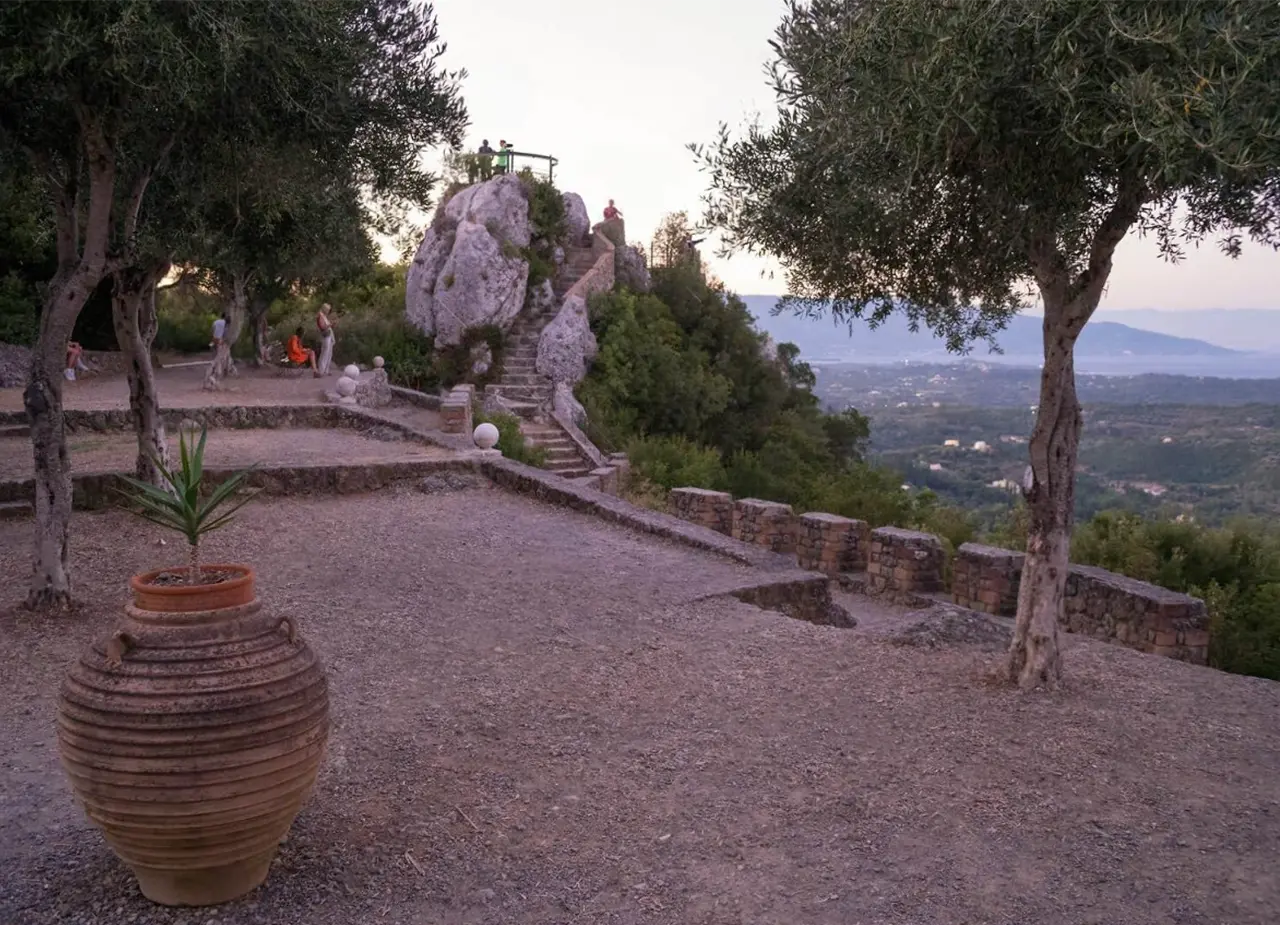Corfu and Tradition

Corfu, also known as Kerkyra, is one of the most renowned islands of the Ionian Sea, with a rich cultural heritage reflected in its dialect, cuisine, and music. Its history, influenced by various cultures, has shaped a unique identity that remains alive to this day.
The Corfiot dialect belongs to the Ionian dialects, which are characterized by the influence of the Venetian language due to the long Venetian rule over the Ionian islands. This influence is evident in many aspects of everyday speech. For example, words like “Spianada” (from the Italian “spianata,” meaning flat area) and “kantouni” (from the Italian “cantone,” meaning corner or narrow alley) are widely used. Additionally, the pronunciation and melody of the dialect bear Italian nuances, with emphasis on vowel endings and the use of double consonants. The Corfiot dialect also retains words and expressions not found in other regions of Greece, making it unique and particularly interesting to linguists. The use of this dialect is a sign of the cultural identity of the Corfiots and an important part of their cultural heritage.
Beyond everyday language, the contact with the Venetians also influenced other aspects of Corfiot culture. One of these is the cuisine, a gastronomic treasure that combines Greek traditions with Venetian influences, creating unique flavors that satisfy even the most discerning palates. Perhaps the most famous dish of Corfu, pastitsada, is a dish with beef or rooster cooked in a rich tomato sauce with spices, served with thick pasta. Spices like cinnamon, cloves, and nutmeg give it a distinctive flavor. Another characteristic dish, sofrito, consists of thin slices of beef that are fried and then cooked in a white sauce with garlic, parsley, and white wine. The result is a tender and flavorful dish typically served with mashed potatoes or rice. Corfu, as an Ionian island, also features fish dishes in its culinary repertoire. Bourdeto is a spicy fish soup made with scorpionfish or other white fish, cooked in a red sauce with pepper and onions. Its strong flavor makes it a favorite dish for seafood lovers. Another distinctive dish is the Bacalaros bianco, a dish made with cod cooked in a white sauce with garlic, potatoes, and lemon. The simplicity of the ingredients highlights the freshness of the fish and the delicate flavor of the sauce.
Famous Products
Beyond local dishes, the island of the Phaeacians also produces unique products that are exported to the rest of Greece and the world. An important example is kumquat, a small citrus fruit introduced to Corfu in the 19th century, which has become a symbol of the island. It is used to make liqueurs, spoon sweets, and jams, offering a unique sweet-sour taste.
During Venetian rule, even ordinary citizens living in the city had the opportunity to attend and participate in cultural events such as operas and concerts. Thus, over time, the island’s inhabitants developed a love for music and created their own traditions. One of these is the “kantades,” a type of romantic song sung by groups of men, often accompanied by guitars and mandolins. This tradition, rooted in Italian music, is particularly vibrant in Corfu, with locals singing in the neighborhoods and squares of the island. Additionally, the tradition of mandolato bands is also very popular in Corfu. These are groups that use mandolins and other traditional musical instruments, playing melodies and songs that often have Italian and Mediterranean influences. These musical performances often accompany festivals and religious ceremonies, making them unforgettable celebrations full of life. The traditional Corfiot melodies have shaped the musical landscape of the island and continue to be performed and interpreted by local musical groups and associations.
The tradition of Corfu is rich, with deep roots in the island’s history and culture. The dialect, cuisine, music, and religious traditions embody the identity of the Corfiots and form the soul of the island. All these cultural treasures continue to be celebrated and preserved as the new generation enjoys these traditions and shares them with the rest of the world.

